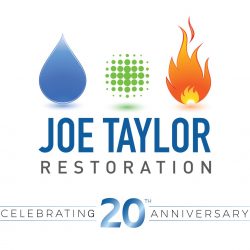Wood Floors and Water Damage
Date
Thursday, November 17, 2016
Date
Thursday, November 17, 2016
 Most people, if not all people, like wood floors. They are durable, environmentally friendly, visually pleasing, and do not harbor dust mites and dirt like carpet. But wood floors and water damage? No thank you. Wood floors, depending on the material used, already potentially carry a higher price tag than tile and the like. So the idea of them being damaged by water and having to be removed sounds somewhat less appealing.
Most people, if not all people, like wood floors. They are durable, environmentally friendly, visually pleasing, and do not harbor dust mites and dirt like carpet. But wood floors and water damage? No thank you. Wood floors, depending on the material used, already potentially carry a higher price tag than tile and the like. So the idea of them being damaged by water and having to be removed sounds somewhat less appealing.
The sad truth of the matter is that wood floors and water damage are a relatively common occurence. Home and business owners alike all too often discover that their beautiful floors have begun to warp, gap, or even rot because of something as simple as a water leak or as major as a flood. But before a property owner can determine whether the next step is saving or drying their water damaged wood floor, they must first consider exactly what type of wood flooring they’re dealing with.
Types of Wood Floors and Moisture
There are three main types of “wood flooring.” Solid wood flooring, which includes strip wood, plank wood, and parquet flooring, engineered wood flooring, and laminate wood flooring. Laminate wood flooring, however, is made up of plastic and other material, and is not actually wood at all.
Although none of these wood flooring systems will tolerate high levels of moisture, some of them do fair better than others. Solid wood floors have the highest salvage potential because they consist of 100% real, solid wood. Generally speaking, a solid wood floor can be sanded and refinished several times in its lifetime. So if the floors are dried properly, the moisture is controlled, and the flooring system is stabilized, refinishing can restore even badly damaged floors. Parquet flooring, is perhaps the exception in this category, as it is installed differently than the rest of solid wood floors.
Engineered wood, although moderately stable when exposed to minor moisture, has a major disadvantage. The top veneer wear layer is very thin, so it is unlikely that it can be refinished, and will need to be removed in most cases.
Laminate floors have a low tolerance for moisture. The high-density fiber core permanently swells when it absorbs water, removing any chance for restorability after this occurs. If laminate flooring endures water damage, it will most likely need to be removed.
www.wfca.org ; www.woodfloors.org
Wood Floors, Water Damage, and Joe Taylor Restoration
Joe Taylor Restoration had the privilege of drying a lovely solid wood floor for a customer in Miami, Florida last month. Because we were thorough in the remediation process, the floors were saved and will be able to be repaired and refinished. The customer was thrilled, “thoroughly impressed with the response time, service, and wood drying process.”
We are experts in the restoration field and very well versed in the many different factors that come into play when the discussion is drying wood floors. If you have a wood floor of any kind and you find yourself with the issue of wood floors and water damage, contact us right away. We will do everything we can to save your wood flooring. And even when extensive damage doesn’t allow us to save it, we will make sure your home is restored to a place of comfort once again- thoroughly dry and mold free.

